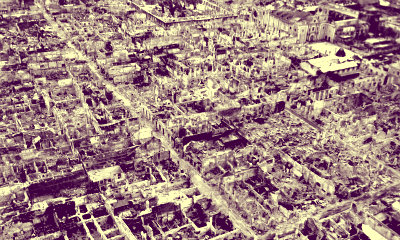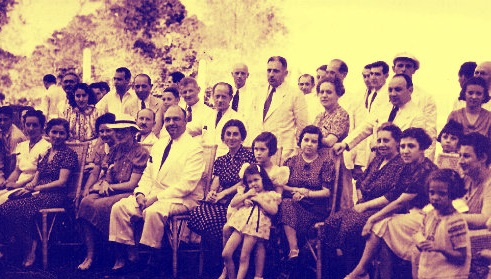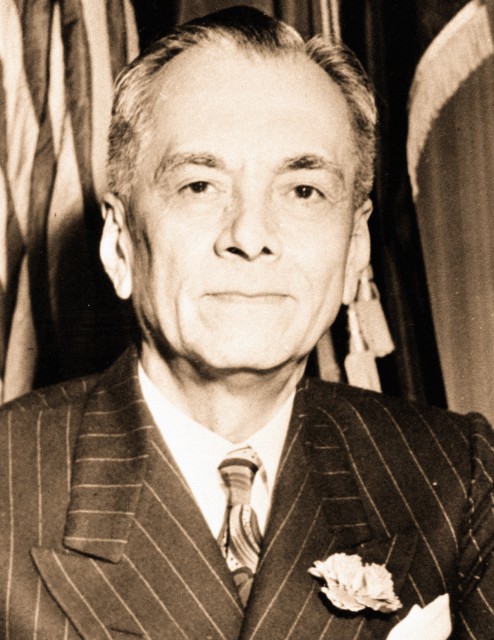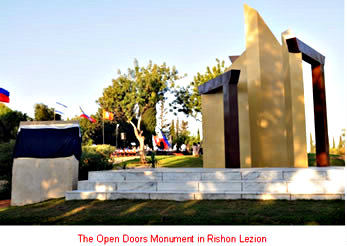During the Holocaust, an unlikely country became a sanctuary for the persecuted Jews — the Philippines. While other countries closed their doors to refugees of Jewish descent, Philippines opened its own to an estimated number of 1,200 European Jews. However, while these Jews were able to escape the Holocaust, their stay in the Philippines afforded another trial for them — the invasion of the Japanese forces.
Between the years 1937 and 1941, about 1,200 European Jews escaped to the Philippines in a bid to be free from the fear brought about by the iron grip of the Nazis. However, as one surviving Jewish refugee in the Philippines puts it, they ran away from a heated pan to be placed right under fire. The horrors of war hounded them, this time in face of the Japanese forces who invaded and occupied the country for over two years.
Philippines: How It All Began
It was in the late 1930s when the first president of the Philippine Commonwealth, Manual L. Quezon, along with other American dignitaries which included future U.S. President Dwight D. Eisenhower and the Jewish-American brothers, the Freiders, became increasingly worried with the plight of the Jews residing in Europe.
![Ursula Miodowski [the five-year-old child with her mother] and Lottie Cassel, Jewish refugees in the Philippines during the Holocaust.](https://www.warhistoryonline.com/wp-content/uploads/sites/64/2015/02/Jewish-refugees-Lottie-and-Ursula-in-the-Philippines.jpg)
As the Philippine Commonwealth was under the supervision of the United States during those times, the country couldn’t welcome people who were in need of public assistance. So, the refuge committee of the country sought the professionals who were highly skilled like the doctors, accountants and the mechanics.
When 1938 rolled in, a flow of Jewish refugees arrived in the Philippines. There were doctors, chemists, a rabbi and even a conductor within the group. The conductor, Herbert Zipper, was a survivor of the Dachau concentration camp. Later on, he founded the Manila Symphony Orchestra which is known as the first symphony orchestra organized throughout Asia.
Philippine Commonwealth President Manuel L. Quezon initially planned for 10,000 Jews to settle in Mindanao in the southern part of the Philippines. However, the coming of the Japanese forces in the country’s shores thwarted that.
Philippines: The Jews’ Tropical Home
Lotte Cassel [now Hershfield] and her family were among the Jewish refugees who settled in the Philippines.
At the very young age of seven, she learned to avoid the benches which bore the sign No dogs or Jews allowed. She wasn’t allowed to go to a public school and lived in fear after the Nazis, along with their German shepherds, raided her home and burned all their books.
Lottie, now 84, said that even as a little child, she was so aware that the Jews like her weren’t welcome even in their very own homes.
Because of fear, her parents decided to move the whole family from Breslau, Germany -which was their hometown – to a new home, a strange place called the Philippines.
Like the Cassels, many Jews who settled in the tropical country came from Austria and Germany where antisemitism was intensifying. As they were not able to immigrate to countries like the United States or the United Kingdom, many of them fled to Sousa, Dominican Republic, Shanghai, China and Manila, the capital city of the Philippines.
Settling in the Philippines was a shock for many of these Jewish refugees. As Lottie pointed out, they did not know the language and most have not seen non-white individuals before. Added to that was the country’s climate which was far-fetched from what they had back in Austria and Germany.
Being in the tropics, the humidity was very thick and the heat was stifling. Mosquitoes also thrived everywhere.
But the younger Jewish refugees adapted easily to their new environment. Lottie recounted how she befriended their local neighbors, ate tropical fruits like guava and papaya just like her Filipino friends, swam in the bay, learned some Filipino songs and ran around in summer clothes and sandals on her feet.
She admitted that though she did not have difficulty adapting to her new surrounding, her parents had a harder time doing so. She said that they did not learn the language throughout their stay in the country and mostly kept to themselves and their group composed of other Jewish immigrants.
Furthermore, many of the refugees lived in crowded housing communities where fights were a common occurrence. As Noel Izon, the person who helmed the documentary film An Open Door: Jewish Rescue in the Philippines, stated, the life the immigrants lived in the Philippines was a far cry from what they were used to back in Europe. However, their stay within the country afforded them freedom — freedom to practice their own religion, freedom to blend in with the others and freedom to hold businesses.
Nevertheless, those idyllic days under the tropical sun of the Philippines came to a sudden end when the Japanese army brought Second World War into the shores of the country.
Philippines: The Coming of the Japs
Japanese forces started occupying the country in 1941. In a way, the Jewish refugees in the country were treated better compared to the Filipinos. Ironically, what protected them from the wrath of the Japanese army were their German passports etched with the Nazis’ swastika. Because of this, the Jews were seen as allies.
According to Ursula Miodowski, who was seven years old at the time of the Japanese occupation of the Philippines, it was only later that she realized how their German passports saved them from being interred into the Japanese army’s prison camps. In contrast, the British and the Americans were imprisoned. Filipino and American soldiers were also forced to go through the infamous 65-mile Bataan Death March which killed about 10,000 prisoners.
Not only did the Japanese army amassed crops for its own, officers also confiscated some of the homes of the residents. Soon, the local economy shrunk and food supplies became scarce. To top that, the Japanese soldiers were very brutal and hard to the people, said the surviving Jewish refugees.
When the Allies – particularly the Americans – began taking the country back from its invaders, the war between the two parties grew intense. Bombs fell from the sky everyday that families had to hide in bomb shelters without knowing where the next bomb would fall. Jewish refugee Frank Ephraim spent days shaking with a mattress over his head and crouching in a ditch to hide himself. One of Lottie’s friends died after accidentally stepping on a land mine.
When the Japs realized they were losing their hold on Manila, they launched a brutal campaign against the city and its inhabitants. Torture, rapes, bayoneting and even the beheading of civilians became widely known. These were the reasons behind Japanese General Tomoyuki Yamashita’s execution later on; he wasn’t able to control his troops.
Jewish refugee Ursula said that the Japs were hell-bent in pulverizing Manila, the capital city of the Philippines. They burned and killed for that. But then, even through these horrors, Ursula stated that living in Manila was more preferable than staying in Europe and being interred into one of the Nazis’ concentration camps.

And though Lottie Cassel faced both fronts of the war throughout WWII – the Nazis in Europe and the Japanese forces in the Philippines – she still expressed her gratefulness to the country for opening its doors to them immigrants. According to her, if not for the refuge offered by the country, they would have ended in some Nazi camp’s crematorium.
Philippines: The Honor
A monument was unveiled in honor of the Philippines at the Holocaust Memorial Park in Rishon Lezion, Israel way back in 2009. The said commemorative edifice, shaped like three open doors, was made out of the gratitude Israel feels for the help the country extended to the Jews during the Holocaust.
Many of the descendants of the Jewish immigrants in the Philippines have not forgotten how the place became their ancestors’ haven during the bloody war. As a matter of fact, they extended help when the country was hit by super typhoon Haiyan in November of 2013.
For Danny Pins, son of a Jewish refugee in the Philippines, it was like paying a debt to the country which, at a dire time of need, helped his family.


